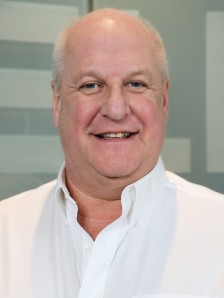 Over the last fifteen years, I’ve watched convergence continue throughout the industry. Commercial printers are constantly finding new ways to diversify. Many are identifying untapped packaging or specialty finishing opportunities within their existing customer base, but without the right machinery to handle these tasks, they are forced to outsource or turn down valuable jobs.
Over the last fifteen years, I’ve watched convergence continue throughout the industry. Commercial printers are constantly finding new ways to diversify. Many are identifying untapped packaging or specialty finishing opportunities within their existing customer base, but without the right machinery to handle these tasks, they are forced to outsource or turn down valuable jobs.
Even with these opportunities, many commercial printers remain hesitant to bring this work in-house. After years in the business, I’ve had the privilege of guiding many customers through the process of transitioning into packaging. Below, I’ve highlighted some of the key insights I often share to help them through it.
One thing I can say for certain: HEIDELBERG is the only company with the most comprehensive range of offerings – from expert support and training to reliable, high-performance equipment – that makes the transition to packaging seamless for commercial printers.
Q: What’s the number one thing commercial printers need to understand before getting into packaging?
CR: The most important thing is to have a clear understanding of where you’ll get the work from. It’s much easier to get business from your existing customers than to find new ones. You need to assess whether you can leverage a sufficient percentage of work from your current customer base to justify the investment in packaging equipment. From there, consider how you plan to grow beyond that. This could mean expanding within your region or scaling up by increasing business with existing clients.
Q: Where should printers look for packaging opportunities before deciding to make an investment?
CR: Most commercial printers won’t be able to tap into large brand-name food, pharmaceutical, or cosmetic packaging right away. Instead, here are some places to start:
In a “step by step” approach, many printers start with these smaller markets and gradually scale up as they build experience and volume. Many start with a die cutter and then add a folder gluer when the business is large enough. Initially, the die cutter is used to handle a variety of jobs, including commercial products like pocket folders as well as some packaging work. Depending on the style and end use, they may be able to finish these jobs using their existing folding equipment.
Q: What are some of the benefits of bringing packaging in-house?
CR: When you subcontract work, you lose control over both the quality and timeline of your customers’ projects. Your customers depend on you to deliver work that meets their expectations. Subcontractors can add a level of uncertainty, putting your reputation as a business in the hands of someone else. Bringing it in-house allows you to maintain full control to ensure more reliable outcomes and delivery times. Additionally, managing it yourself allows for better cost control and the potential for higher margins.
Q: What are some of the biggest hesitations for commercial printers when considering bringing packaging work in-house?
CR: In conversations with customers, some of the most common concerns are:
Q: Aside from equipment, how can HEIDELBERG help me through this transition?
CR: With extensive knowledge in both commercial and packaging production, HEIDELBERG’s team of experts is prepared to help you throughout every stage of this important shift in your business:
Q: What entry level equipment does HEIDELBERG offer for printers just starting out in packaging?
CR: We currently offer two entry-level machines: the Easymatrix die cutter and the Diana Go folder gluer. Both are user-friendly, affordable, and capable of handling a wide range of packaging jobs. The Easymatrix and Diana Go were both designed with operator-friendly features, including ergonomically arranged control panels and touchscreens, making them easier for operators to use.
The quality and performance of these machines are often underestimated, yet we produce more entry-level die cutters each year than our main competitors. While entry-level machines may not match the high-end models in terms of speed and complexity, they are an excellent choice for small to medium runs and niche packaging needs.
Our extensive equipment portfolio grows with your business, allowing you to seamlessly upgrade to more robust machines, like the Promatrix 106 CS/CSB die cutter or the Diana Easy folder gluer, as you take on larger volumes and more complex jobs. Additionally, this summer, we are launching an alternative at an even more competitive price point: the Ecocut 106 CS and the Bestfold FB II folder gluer range.
Q: If I already have older converting equipment in-house that’s “getting the job done”, why should I spend the money to invest in modern equipment?
CR: If you’re relying on aging die cutters or folder gluers, you’re limiting your growth potential in the packaging space. Modern equipment provides better reliability and faster speeds, enabling you to tackle more complex jobs while delivering quicker turnarounds and higher-quality, more consistent products for your customers. Additionally, newer machines are often easier to operate, reducing the learning curve and streamlining production, which is increasingly important as skilled labor becomes more difficult to find.